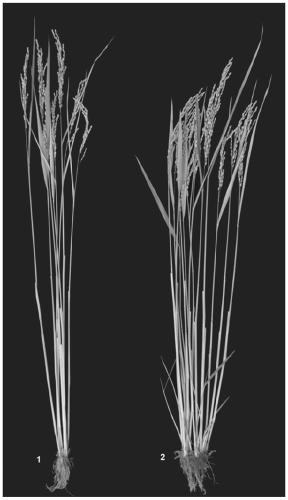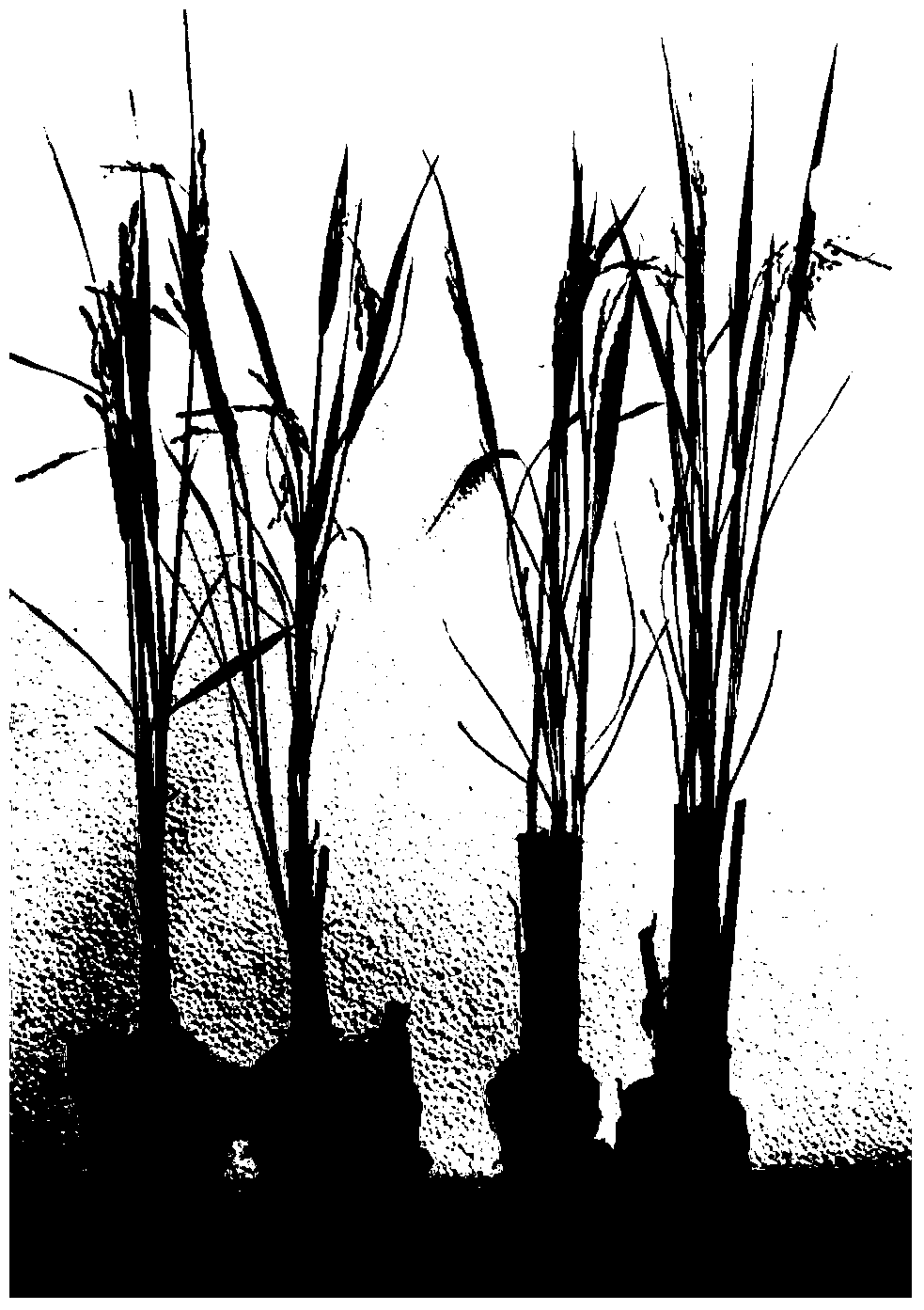A method for producing regenerated rice tillers in advance to improve the yield of regenerated rice
A technology for ratooning rice and yield, applied in the field of agricultural biology, can solve the problems of short growth period, lack of application value, and less time for photosynthesis, and achieve the effects of increasing yield, good grain filling, and prolonging the growth period
- Summary
- Abstract
- Description
- Claims
- Application Information
AI Technical Summary
Problems solved by technology
Method used
Image
Examples
Embodiment 1
[0017] Example 1 Cloning of 12 different rice genes in OsMIR156a-l
[0018] Using the online Primer-BLAST software, the upstream and downstream primers were designed for 12 different OsMIR156a~l genes. The main setting or modification parameters during primer design include: PCR product size is 150-1000bp; Primermelting temperatures (Tm) is 55-65°C; Organism is set to Oryza sativa (japonicacultivar-group) (taxid: 39947); Database selection It is Refseq representative genomes, and the rest of the parameters are the default values of the system. After the primers were set, they were sent to Huada Genomics or Wuhan Jinkairui Biological Company for primer synthesis.
[0019] The CTAB method was used to extract DNA from Nipponbare, Zhonghua 11 or other rice materials, and the synthetic primers corresponding to different OsMIR156a~l genes designed by the above method were used for PCR amplification. The PCR reaction system was 50 μL: DNA template 1.0 μL, normal Direct primer 1.0...
Embodiment 2
[0032] Example 2 Cloning of Tissue and Organ-Specific Expression Promoter Sequences
[0033] The stem-specific expression promoter is preferably the promoter of OsGA3ox2 gene. The about 2.1Kb promoter of the OsGA3ox2 gene (referred to as the D18 promoter), wherein the relevant information of the D18 promoter sequence is reported in the literature (SakamotoT, Morinaka Y, Ishiyama K, Kobayashi M, Itoh H, Kayano T, Iwahori S, MatsToka M, Tanaka H. Genetic manipulation of gibberellin metabolism in transgenic rice. Nat Biotechnology. 2003, 21:909-913). Utilize the PCR method described in this reference to obtain the fragment and connect it to the pBluescriptSK+(pBS) carrier fragment obtained by EcoR V enzyme digestion to obtain the intermediate vector pBS-D18p, and send it to Huada Gene Biotechnology Company for sequencing analysis, and the sequencing result shows that it is consistent with the obtained Knowing that the sequences were completely consistent, the pBS-D18p plasmid wa...
Embodiment 3
[0034] Example 3 Construction of 12 stem-specific expression vectors pWM-D18p-OsMIR156a~l (abbreviated as D18Pro-OsMIR156a~l)
[0035] After digesting the vector pWM101 and BamH I / sal I with HindⅢ / sal I and the intermediate vector pBS-OsMIR156a~l respectively, the required fragments were recovered, and the three fragments were ligated with T4ligase and D18p promoter. The system is: HindⅢ / sal I digestion vector pWM101 product 1.0 μl, HindⅢ / BamH I digestion pBS-D18p plasmid 1.0 μl, BamH I / sal I digestion intermediate vector pBS-OsMIR156a~l 1.5 μl, 5×T4ligaseBuffer 1.0 μl and T4ligase 0.5 μl, the above reaction ligation system was kept at 16°C for 30min or at 4°C overnight. Then adopt conventional molecular test methods to transform the ligation product into strains of competent Escherichia coli, and use Kan + Through resistance screening, 12 different vectors pWM-D18p-OsMIR156a~l were obtained.
PUM
 Login to View More
Login to View More Abstract
Description
Claims
Application Information
 Login to View More
Login to View More - R&D
- Intellectual Property
- Life Sciences
- Materials
- Tech Scout
- Unparalleled Data Quality
- Higher Quality Content
- 60% Fewer Hallucinations
Browse by: Latest US Patents, China's latest patents, Technical Efficacy Thesaurus, Application Domain, Technology Topic, Popular Technical Reports.
© 2025 PatSnap. All rights reserved.Legal|Privacy policy|Modern Slavery Act Transparency Statement|Sitemap|About US| Contact US: help@patsnap.com



